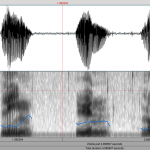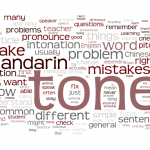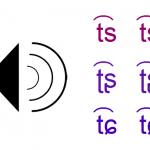You searched for third tone | Page 2 of 10 | Hacking Chinese Page 2
-
Obligatory and optional tone change rules in Mandarin
As if learning basic tones wasn’t enough, tones in Mandarin also influence each other and change depending on context. Some of these tone change rules you have to learn, but others are better left alone and will be absorbed automatically over time.
Read → -
7 kinds of tone problems and what to do about them
Tones are tricky to learn and students often encounter many different kinds of problems. Since the solution to them are very different, it’s important to understand what the problem actually is before you try to do something about it!
Read → -
Learning to hear the sounds and tones in Mandarin
Learning to hear the difference between tones in Mandarin can be difficult for adult learners. In this article, I introduce two effective ways of overcoming this problem, as well as my own research project, which is meant to help students and will be available soon.
Read → -
Sensible character learning challenge 2014: Milestone #3
The second milestone in the 2014 sensible character learning challenge has now been reached! This is also the last opportunity to join the challenge if you haven’t already. If you have, it’s time to report you progress in May. This article also contains information about prizes (character posters, free extensions and Chinese learning products) for the third milestone, as well as my own reflections of my character learning.
Read → -
Focusing on tone pairs to improve your Mandarin pronunciation
When learning to pronounce tones in Chinese, it makes sense to focus on words rather than single syllables. Most words in Mandarin are disyllabic and since practising these will also include tone changes (sandhi), focusing on tone pairs is recommended. This article gives you all HSK and TOCFL words, sorted by tone! First all [first tone] + [first tone], then all [first tone] + [second tone] and so on. This is great for students who need words to practise difficult combinations, but it’s also useful for teachers.
Read → -
Extending mnemonics: Tones and pronunciation
Using mnemonics to memorise concrete objects is fairly easy, but how can we use mnemonics to remember abstract things such as tones and pronunciation? In this article, I expand my previous discussions of mnemonics and show how they can be quite powerful if you’re prepared to invest some extra time.
Read → -
The tones in Mandarin are more important than you think
Tones are more important than most people think. Just because native speakers reduce tones and speak quickly, it doesn’t mean that you can do the same and get away with it. Don’t be fooled by people who say that tones in Chinese aren’t as important as all that, because they’re wrong.
Read → -
You won’t learn Chinese simply by living abroad
A widespread myth about learning Chinese is that you will master the language simply by moving abroad to live in an immersion environment. However, how much you learn is determined by how much you engage with the language, not by your geographical location.
Read → -
How learning some basic theory can improve your Mandarin pronunciation
Listening, mimicking and getting feedback is the best way to learn Chinese pronunciation, but unless you’re a small child or extremely talented, adding some theory to the mix can also be helpful.
Read → -
Don’t try to improve everything at once when learning Chinese
To communicate in Chinese, many skills need to work in unison, but trying to improve all of them at once is a recipe for frustration. Instead, limit your focus to make progress and stay motivated!
Read →








